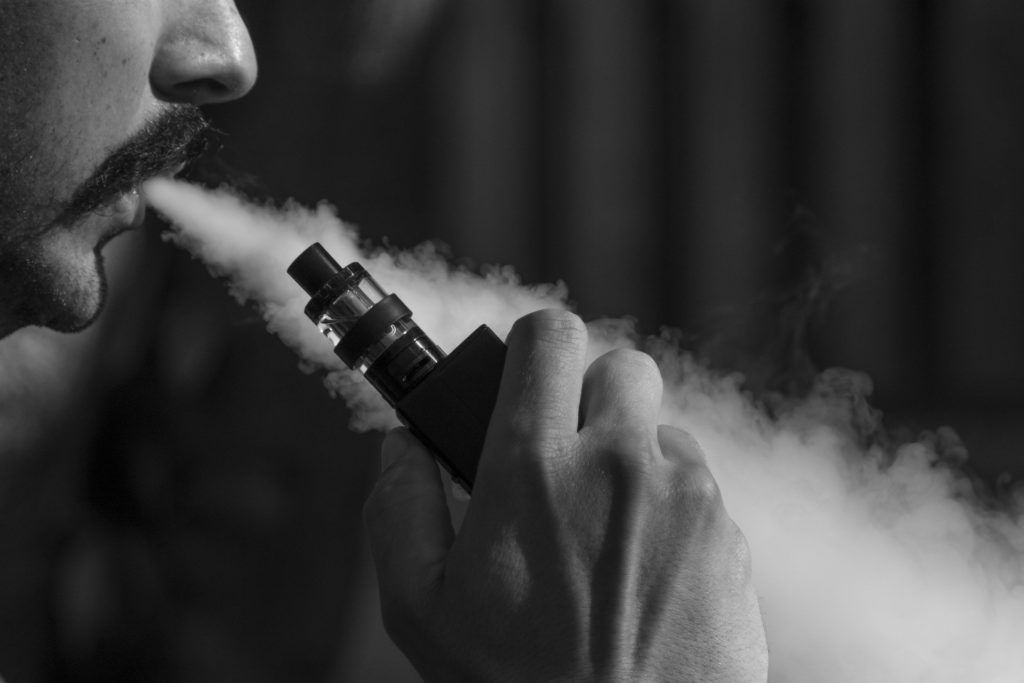The science behind vaping
by Scott Dutfield · 05/09/2020
Is vaping the answer to quitting smoking, or does it cause more problems than it solves?

Created as a way to help prevent the devastating effects of smoking, over the past few years vaping has been found to be the cause of its own set of illnesses.
Quitting smoking, along with any addiction, can be incredibly challenging due to the body’s dependence on the chemical compound nicotine. Replacement products such as nicotine patches, lozenges and gum offer an alternative way to get a nicotine fix without inhaling the thousands of chemicals that come with each lit cigarette. However, where these products have fallen short is their lack of ability to address the behavioural aspect of smoking.
Introducing the electronic cigarette, or ‘vape’: promising the same dopamine rush gained from a tobacco cigarette and mimicking the oral habit of smoking, e-cigarettes have quickly become the digital answer for treating addiction… but at what cost?
The billowing clouds of false smoke that pour from the mouths of vape smokers are a result of liquid vaporisation or atomisation. While inhaling through a mouthpiece of an e-cigarette, a drop of nicotine-rich fluid, commonly called ‘e-liquid’, is heated and quickly converted into a vapour. The vapour carries all the nicotine a smoker craves, delivering it in the same way as cigarette smoke when it enters the lungs and diffuses into cauliflower-like cavities called alveoli. Although the dangers of inhaling nicotine remain, another collection of conditions have been brought to light that are linked with vaping.
After increasing levels of unexplained respiratory issues began to pile up in patients in recent years, medical attention turned to vaping. Over time, an increasing number of otherwise healthy individuals who vaped were being rushed into hospital with symptoms such as shortness of breath, fever, coughs and chest pain. Now known as ‘e-cigarette or vaping product use-associated lung injury’ (EVALI), it’s believed that damage to the lungs as a result of vaping points to a THC (a cannabinoid from the marijuana plant) additive. However, research into the cause of EVALI is still in its infancy, with much more research needed to fully understand the condition. As of 18 February 2020, the Centers for Disease Control and Prevention confirmed 68 deaths in patients with EVALI.
Flavouring smoke
From natural flavours such as cinnamon and vanilla to the artificial tastes of bubblegum, Red Bull and even hot dogs, the vaping industry has created a seemingly endless list of potential vaping flavours. But how are flavours made? The answer lies in the chemical composition of the e-liquid which is vaporised within the e-cigarette. Similar to the production of essences added to food, chemicals such as ethyl vanillin (vanilla) and cinnamaldehyde (cinnamon) are added to propylene glycol or vegetable glycerin – a sugar alcohol product derived from animal products, plants or petroleum – and nicotine. This chemical cocktail is then transformed into a vapour when heated to around 200 degrees Celsius, carrying the flavour chemicals along in the cloud of vapour.
This article was originally published in How It Works issue 136
For more science and technology articles, pick up the latest copy of How It Works from all good retailers or from our website now. If you have a tablet or smartphone, you can also download the digital version onto your iOS or Android device. To make sure you never miss an issue of How It Works magazine, subscribe today!





